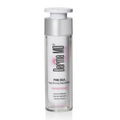How to Combat Rosacea
Approximately fourteen million people across the U.S. (that’s about 1 in 20) suffer from rosacea. Usually it develops in adults between 30 and 50, and affects both men and women. Although it’s more common in women, the more severe cases seem to occur in men.
It tends to affect people with fair skin, typically north-eastern European descent ie. Celtic, English, Scottish, although rosacea can develop in any skin type.
Rosacea is a chronic, inflammatory skin disease that is characterized by lingering facial redness, as well as painful, tiny pus-filled bumps. Rosacea is often misdiagnosed as Eczema, Acne or Allergies and unfortunately, the longer it’s undiagnosed and untreated, the worse it can become.
Signs and symptoms of the different forms of Rosacea
There are 4 forms of rosacea, which are defined by the following range of symptoms:
- Mild: The main symptoms are facial flushing and redness, there may also be some swelling, burning, stinging, roughness, and visible broken blood vessels.
- Moderate: This is a more advanced form of rosacea that is marked by persistent redness and pimple-like bumps (often mistaken for acne).
- Severe: In some individuals, rosacea may affect the nose, causing the skin tissue to thicken (giving an enlarged appearance) and become red, bulbous and bumpy. This advanced form of rosacea is called rhinophyma, and tends to be more common in men.
- Ocular rosacea: In addition to skin symptoms, rosacea may also affect the eyes and eyelids. It may cause redness to the surrounding skin tissue but also burning or stinging, dryness, light sensitivity, blurred vision, and watery, bloodshot eyes.

Causes
Experts are not certain what specifically causes rosacea. They believe it is due to a combination of genetic and environmental factors, such as:
Triggers
Individuals who suffer from rosacea should ensure they avoid or limit their intake of:
- alcohol
- caffeine
- spicy foods
- some also believe dairy can be a trigger
- and definitely intense sun exposure!
Treating Rosacea
There is no known cure for rosacea, although it can be managed with appropriate treatment and lifestyle changes. Rosacea does not improve or resolve on its own, and untreated rosacea can worsen over time.
Unlike acne, self-treating with over-the-counter products may not help and may even irritate skin more, causing more redness and bumps. Your family doctor or dermatologist can prescribe various forms of treatment and recommend which skin care products and cosmetics are appropriate. Sticking with the treatment recommended by your doctor will improve symptoms within a few weeks.
Treatment has typically been with medications, such as:
- Metronidazole
- Antibiotics
- Steroid creams
- Isotretinoin (oral)
- Tretinoin (cream)
- Sodium sulfacetamide and sulphur
Laser therapy and other cosmetic treatments include:
- NdYag 1064nm: safe on all skin types; targets deeper vessels, pigmentation and can be used to inhibit the overgrowth of tissue in rhinophyma.
- Intense Pulsed Light (IPL): safe on lighter skin types; targets surface vessels.
- Bulk Thermal Heating (ie Laser Genesis): safe on all skin types; targets all types of redness by coagulating microvasculature in the skin.
- Vascular lasers: target various types of vessels and broken capillaries which contribute to redness and flushing.
Tips regarding Rosacea
Good skin health tips: The key to caring for skin affected by rosacea is to treat it gently.
- Choose products that are non-drying, free of alcohol or astringents
- Use a mild cleanser and do not rub or scrub too much
- Use sunscreen SPF 30 or higher every day
- Use a moisturizer with sufficient hydrating agents that do not clog pores or consist of heavy rich emollients or creams.
- Look for ingredients that are calming, soothing, hydrating, anti-inflammatory, anti-bacterial and provide healing properties…such as:
- aloe
- calendula
- soybean oil
- astaxanthin
- palmitoyl pentapeptide-3
- copper peptides
- retinyl palmitate
- algae
- green tea
- co-enzyme Q10
- sodium hyaluronate (or hyaluronic acid)
- zinc
Treat Rosacea with Pink Silk, Copper +
CoEnzyme Q10 and SunProtect SPF 30
Sun protection is critical to managing rosacea, so our SunProtect SPF30 Moisturizer is an essential for daily sunscreen year-round. Pink Silk Face Firming Rejuvenator helps to lessen redness and rejuvenate skin, Copper + COEnzyme Q10 Moisturizer will reduce distended capillaries and calm redness





